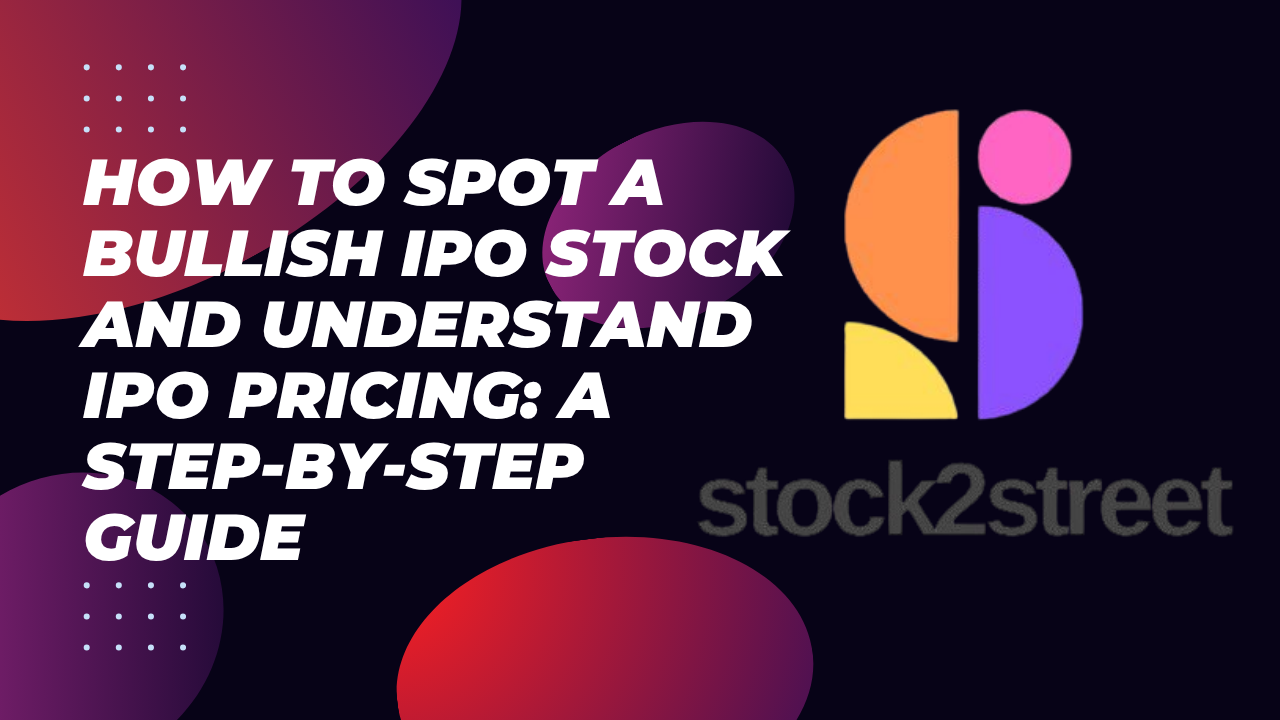Bullish IPO Stock Introduction
Bullish IPO Stock make headlines and excite investors, but how can you actually tell when an IPO is bullish? What does “bullish IPO price” really mean to the retail investor? Bullish IPO Stock, I will take you through a step-by-step explanation of what a bullish IPO looks like, how IPO prices are set, what the signals are that show bullish momentum, and give you practical steps for how to evaluate and act-or not-when an IPO launches. also you can read about Pine labs IPO details 2025 Everything You Need to Know

What “Bullish IPO” Means (Quick definition)
A bullish IPO would be one where the market sentiments and indicators signal likely strong price appreciation upon listing. Bullish IPO Stock can come from high subscription levels, strong pre-market demand (gray market premium), favorable valuation compared to peers, and confident investor and analyst reception. you can read about Why Is the U.S. Stock Market Closed Today
Step 1 — Understand How IPO Pricing Works
Before judging bullishness, know the mechanics:
- Book-building vs Fixed Price: Most modern IPOs use book-building, with banks collecting bids from investors and setting a price range. In fixed-price IPOs, one single price is set for everyone.
- Offer Price: The final price per share determined by the issuer and bookrunners. It considers both raising capital and making shares attractive to buyers.
- Grey Market/OTC Signals: In some markets, a grey market premium indicates aftermarket enthusiasm. A high GMP commonly heralds a bullish open.
- Lock-up Periods: Selling by insiders is restricted for a certain period of time; knowing when the lock-up is expiring is important because selling after the expiration can relax the bullish sentiment later on.
Step 2 Read the Prospectus: Sebi DRHP / S-1 or local equivalent
Prospectus is dry but important. Scan for:
- Business Model & Revenue Growth: Consistent growth and scalable margins are bullish indicators.
- Unit economics and margins: high or improving gross margins indicate a defensible business.
- Use of proceeds: Growth funds used for capex, expansion are more market-friendly than debt payoff.
- Competitive landscape and moat: Look for unique advantages such as IP, network effects.
- Risks & contingent liabilities: Hidden risks can make an apparently bullish IPO go sour.
Step 3 — Check Valuation vs. Public Peers
A bullish IPO often has a valuation that looks reasonable relative to listed peers:
- Price-to-sales (P/S) and EV/Revenue: These are useful for high-growth firms that aren’t profitable yet.
- Price/Earnings (P/E): Only meaningful if earnings exist.
- Compare growth rates: Higher multiples can be justified by higher growth — check the PEG-like relationship.
- Red flags: If an IPO demands a multiple far above that of comparable businesses without clear growth justification, then sentiment is fragile.
Step 4 — Bullish IPO Stock Measure Demand & Market Sentiment
These are practical, real-time indicators:
- Levels of subscription: Oversubscription by retail or institutional usually indicates bullish demand.
- Broker research & analyst notes: Positive coverage prior to listing increases confidence.
- Social & news sentiment: Tone from financial press and investor communities matters, but be wary of hype.
- Grey market premium, if available: Strong GMP usually leads to a bullish listing day.
Step 5 — Bullish IPO Stock Look at Underwriters and Anchor Investors
Quality of banks and anchor commitments matter:
- Top-tier bookrunners: Large, reputable banks provide significant distribution muscle and vetting.
- Presence of anchor investors: High anchor commitments signal institutional confidence and make an IPO more likely to open strong.
Step 6 — Prepare Your Strategy: Entry, Target, Risk
If the signals look bullish, decide on your approach.
- Apply versus wait to buy post-listing: Application during the IPO allows you to get the listing allotment often at the offer price. Buying on or after listing, you risk paying a premium.
- Set target & stop-loss: Decide on an upside target-e.g., 15-30% for short-term listing pop-and a stop to limit downside.
- Position Sizing: Treat IPOs as speculative, using a small allocation relative to your portfolio.
- Time horizon: Bullish short-term momentum doesn’t mean long-term winners. Decide if you’re trading the listing or investing in the business.
Step 7 — Bullish IPO Stock Watch for Listing Day and Early Trading Signs
Listing day dynamics are critical:
- Listing pop: A strong open ( +20% or more) is a bullish signal but might be succeeded by volatility.
- Volume & bid-ask dynamics: High volume, with persistent bids, is healthier than a quick spike then fade.
- Institutional behavior: Look for steady buying from the institutions, rather than retail-driven frenzies.
Step 8 — Bullish IPO Stock Post-Listing Fundamentals & Follow-up
Don’t stop at the listing — monitor the fundamentals:
- Quarterly performance: investigate whether growth and margins are meeting or beating expectations.
- News flow & execution: New contracts, market share gains, or product launches serve to confirm bullish narratives.
- Insider selling patterns: Significant selling could imply weakening confidence.
Bullish IPO Stock Risks to Keep in Mind
Even “bullish” IPOs can reverse. Top risks:
- Hype and short-term flipping: Overexcitement leads to unsustainably high prices.
- Macroeconomic shifts: rising rates, market selloffs, or risk-off sentiment-can kill momentum.
- Execution risk: Growth firms can miss targets, undermining valuations.
Bullish IPO Stock Quick Checklist — Is this IPO Bullish?
- Prospectus shows strong growth & clear moat? ✔️
- Valuation reasonable vs. peers? ✔️
- Strong subscription and grey market premium? ✔️
- Top underwriters and anchor investors present? ✔️
- Listing day demand and follow-through volume? ✔️
If you answered “yes” to most, the IPO has bullish characteristics — but always size positions sensibly.
Conclusion – Be smart, not FOMO-driven
A bullish label should come from a mix of the fundamentals: growth, margins, management, and market signals: demand, pricing, underwriter quality. Separate substantiated bullishness from hype with the step-by-step checklist above. Remember, IPOs can be highly volatile; any trade should be firmly aligned with your risk tolerance and investment plan.
